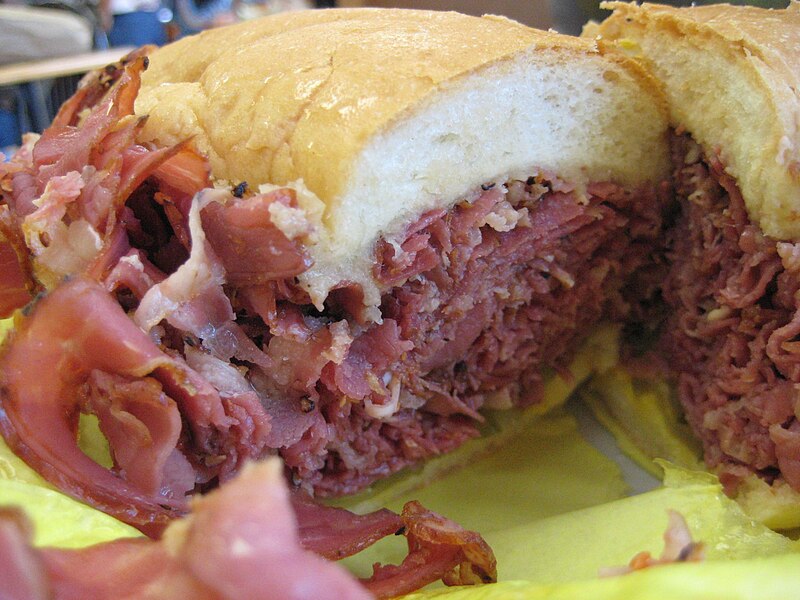
Around New Year's a friend and I were discussing the finer points of sandwich meats, and we found ourselves extolling the virtues of a well made Pastrami sandwich - which neither of us have had for many years. With nostalgia in our hearts and adventure in our spirits, we set out to recreate those oh-so-wonderful pastrami rueben sandwiches now sitting tantalisingly in our minds.
A quick websearch revealed a series of immensely informative articles on About.com on exactly how to make your own corned beef and pastrami. So now I was armed with the process of Brine, Dry Rub and Smoke, I needed to prepare the meat itself.
My Excellent Butcher, Samara on Hassanein Heikel Street in Nasr City, is a highly educated man. I love going there, because all I need to do is tell him the English name of the cut I want, and he fills me in on the cut's name in Arabic, and adds a little culinary history as well. The cut I was looking for was Brisket, which in Arabic is called "Dosh". The same cut has a different name in Arabic, depending on the animal; the more familiar name of "Neefa" is the brisket from a sheep or goat.
Neefa is typiacally braised slowly, after spending a dy or two marinading in grated tomatoes, onions, green peppers and seasoning. This tenderizes the meat for the slow braising. I've had barbecued "Neefa" before, and I did not enjoy it - it was too touch. The Butcher confirmed my judgement by telling me that any self respecting Kebabgy would never offer broiled/barbecued neefa, since it is a very tough cut of meat.
The reason for its toughness comes from the fact that the Brisket corresponds to the Pectoralis muscles of the animal, near the forelegs. Those muscles may be big, but they're also notoriously fatty and tough, since they do so much work. That's where the brining comes in; it loosens it up and in our case, can be used to impart some extra flavor as well.
The butcher prepared a nice 2Kg slab of brisket for me, with the flat and the point still attached per my request. If anything is worth doing, it's worth doing right, and I wanted the satisfaction of preparing the Pastrami from start to finish. I took the meat home and began work trimming and preparing the flat for pastrami. Another websearch yielded this very informative page on how to trim brisket.
Once the flat was prepared, I got my brine on. Cloves, Nutmeg, Cinnamon, Beef Stock cubes, Cardamom, Salt, Pepper, Garlic Powder, Onion Powder and Red Hot Chilli Powder went into about 4 liters of hot water.
It smelled of ambrosia.
I set the flat into the brine, covered it and let it sit in a dark corner of my fridge for 4 days. Thankfully, a trip to warmer climes eased the anticipation anxiety.
Taking the flat out, patting it dry and preparing a dry rub was pure joy, since I could already taste the goodness. The rub was the same as the brine mixture, sans cardamom and water. the final step was then to wrap it in mutiple layers of foil and placing it in a 350 degree oven for an hour and a half.
The result?
Not exactly what I expected, but not a total disaster. In hindsight, I skipped a crucial step - soaking the beef in fresh water overnight to draw out the excess salt and rehydrate the beef a bit. Also, I skipped smoking the meat since #1 I do not have a smoker at home and #2 I could not find wood chips to smoke the meat with.
All in all, it was a proof of concept, and as a good friend of mine said - the 2nd time is always better than the first. I wonder now if she was talking about food...
Cooking Time 1 Week. Ouch.

